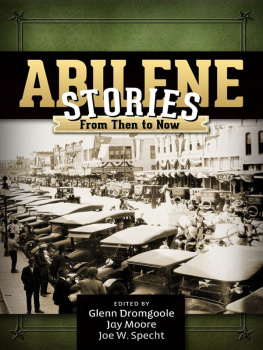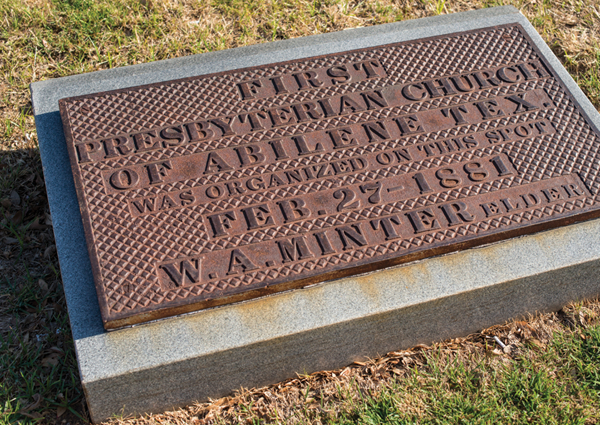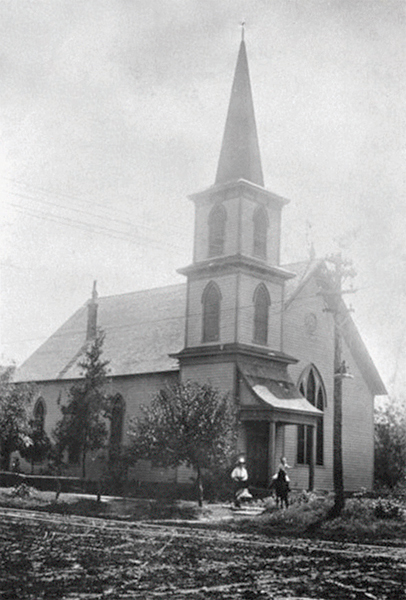Abilene History in Plain Sight Documentary Series
Abilene Beginnings (30 min.) details how the city began and shows the early remindersof our past.
Fair Park of Abilene (30 min.) profiles Abilenes oldest park and its rich history
Who Is That Street? (30 min.) explains the person behind the street name
Bankhead Highway (30 min.) reveals the local remnants of this transcontinental highway
Wooten: An Abilene Life (60 min.) examines the rich life of one of the citys greatestentrepreneurs
Camp Barkeley (30 min.) explores the World War II camp that vaulted Abilene out ofthe Great Depression
DVD documentaries are available through
Texas Star Trading
Texasstartrading.com
174 Cypress Street
Abilene, TX 79601
(325) 672-9696
Abilene Preservation League
Abilenepreservation.org
1174 North First
Abilene, TX 79601
(325) 676-3775
A GRASSY PLAIN
SPRINGS TO LIFE
Abilene instantly sprouted into existence at ten oclock on the morning of March15, 1881, as the Texas and Pacific Railway Company staged a land auction which wouldturn 1,600 acres of west Texas grassland into a brand new town.
The T&P, chartered to build a rail line from Marshall, Texas, to the Pacificcoast, never even reached the border of New Mexico, as the T&P joined her railsto those of the Southern Pacific line at Sierra Blanca, ninety miles east of El Paso.
On their march west, Texas & Pacific track laying crews reached Baird beforeChristmas of 1880 and pushed through the tall grasses of northern Taylor County inJanuary of 1881. By the time the Abilene town lot sale was staged in mid-March, theT&P crews had already laid rails as far west as Sweetwater and would reach theBig Spring watering hole by the end of May.
The T&P had earlier joined with local cattlemen in an agreement to survey andstake out streets and lots at the site which they had chosen for Abilene. The exactspot was centered on milepost 407, which had the advantage of being near the confluenceof Lytle and Cedar Creeks and just over a mile east of Catclaw Creek.
The railroad established towns all along the line but saved its biggest promotionfor Abilene. Advertisements were taken out in newspapers, and reporters were encouragedto come see the possibilities of this newly tamed land billed as the Future GreatCity of West Texas.
Credited with laying out the streets was an agent for the railroad, Josiah StoddardJohnston of Kentucky, who arrived in late 1880. The T&P deeded its lands to Johnstonwho, in turn, would deed them to the winning bidders come auction day. Johnston devisedthe street numbering system and chose to name the streets running perpendicularto the tracks for trees, although he did throw in some catch-all vegetation whenhe opted to name a southside street simply, Vine. Some of the tree streets, suchas Apple and Sassafras, never materialized.
The day prior to the sale brought sleet, and although the sale day dawned brightand clear, the slush remained as a crowd estimated to be around two thousand trompedabout. Whiskey sold from a barrel seemed to be the preferred method of regainingones interior warmth.
At South First and Chestnut an auctioneers platform was assembled from railroadties (the same location which, for decades, hosted a New Year tradition of gunfireto mark the stroke of January 1) and a large plat of the town site was tacked upfor bidders to see which lots were sold. Special trains brought potential buyersfrom back east including a fair number of speculators who hoped their gamble on infantAbilene would pay a handsome return as the town grew.
At ten oclock the auctioneer began the bidding and Abilene was born. Belle Plainsstorekeeper Captain Johnathan Taylor Berry made the first bid as he bought two adjacentlots at the northwest corner of North Second and Pine, paying $355 for each fiftyfoot wide parcel. (The two lots are still joined as one and occupied by a singlebuilding erected in 1954.)
By days end, 139 lots had been sold for a total of $23,810. The bidding continuedthe following day with $27,550 earned from the sale of 178 more of the staked, grassyrectangles along the tracks.
ABILENES
OLDEST CHURCH
When Abilene was born on March 15, 1881, a church had already been established. Andby the time the town was twenty-five years old in 1906, there were sixteen. Thatnumber had increased to twenty-six by 1921. And twenty-five years after thatjustafter World War IIthere were more than twice that many, with twenty Baptist congregations,eleven Churches of Christ, and eight Methodist churches. In 2014, it is difficultto get an accurate count of Abilene churches, but it is near one hundred, accordingto Taylor County records.
When a group of Presbyterians gathered for worship near the temporary Texas andPacific depot on Sunday, February 27, 1881, the town lot sale that would create Abilenewas still two weeks away. The Buffalo Gap family of William Adolphus Minter saw thepromise of Abilene and moved to the Texas and Pacific tracks in anticipation of Abilenecoming into existence. The Minter family and a handful of others met at the spot along the rails and organized Abilenes most senior institutionthe First PresbyterianChurch. A plaque commemorating their historic gathering is located in Everman Park.
Initially, the young congregation met at the frame schoolhouse located at North Thirdand Cedar before moving into its own building in 1884. The 1920s were a period ofgrowth in Abilene and that population spurt resulted in a new sanctuary for FirstPresbyterian that opened for worship on April 6, 1924, and which still stands atthe corner of Orange and North Fourth Street.
A second Presbyterian congregation was organized in 1885. Known as Central Presbyterian,it met at Beech and North Second, only blocks away from its Presbyterian brethren.In a congregational meeting held in December of 1948, this group authorized the purchaseof a new location at North Fifth and Grape and drew up plans for a new building.The traditional, colonially inspired design presented West Texans much to talk about.Despite architectural arguments, the group pressed ahead and the 445-seat New England-stylechurch went up along Grape, with the first services being held on October 1, 1950.The Abilene Reporter-News touted the fact that the pews were cushioned with foamrubber.
In 1970, the congregation of Central Presbyterian united with its kin at First Presbyterian,resulting in Abilenes oldest church taking on the unified name of First CentralPresbyterian. Both church buildings were marketed for sale and whichever sold firstwould then move in with the other congregation. Central found a buyer for its GrapeStreet property and so they made the move a few blocks east to join First Presbyterian..
Founder William Adolphus Minter died in 1908. What was described as the longest funeralprocession in Abilene ended with Will Minters Christmas Eve funeral held in thechurch he established. Descendants of the Minter family remain members of the FirstCentral Presbyterian congregation more than 130 years later.

















